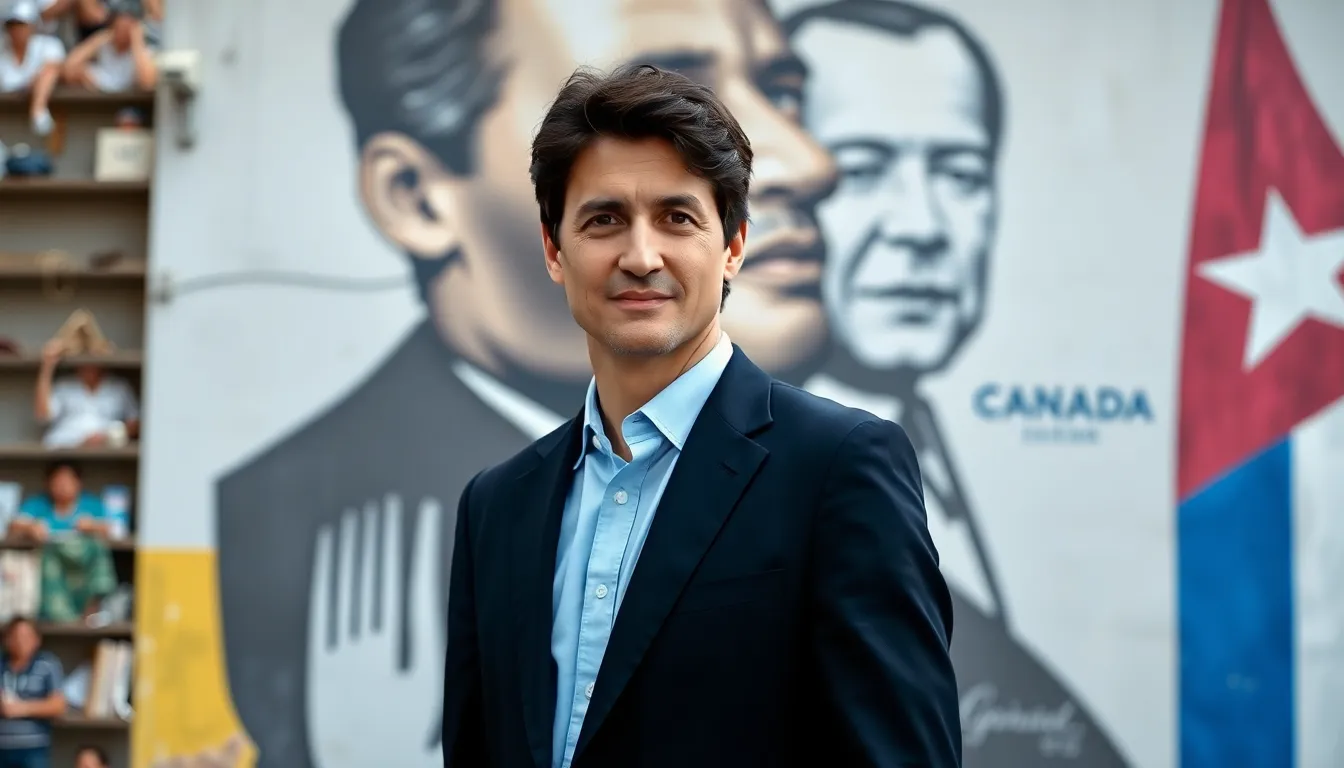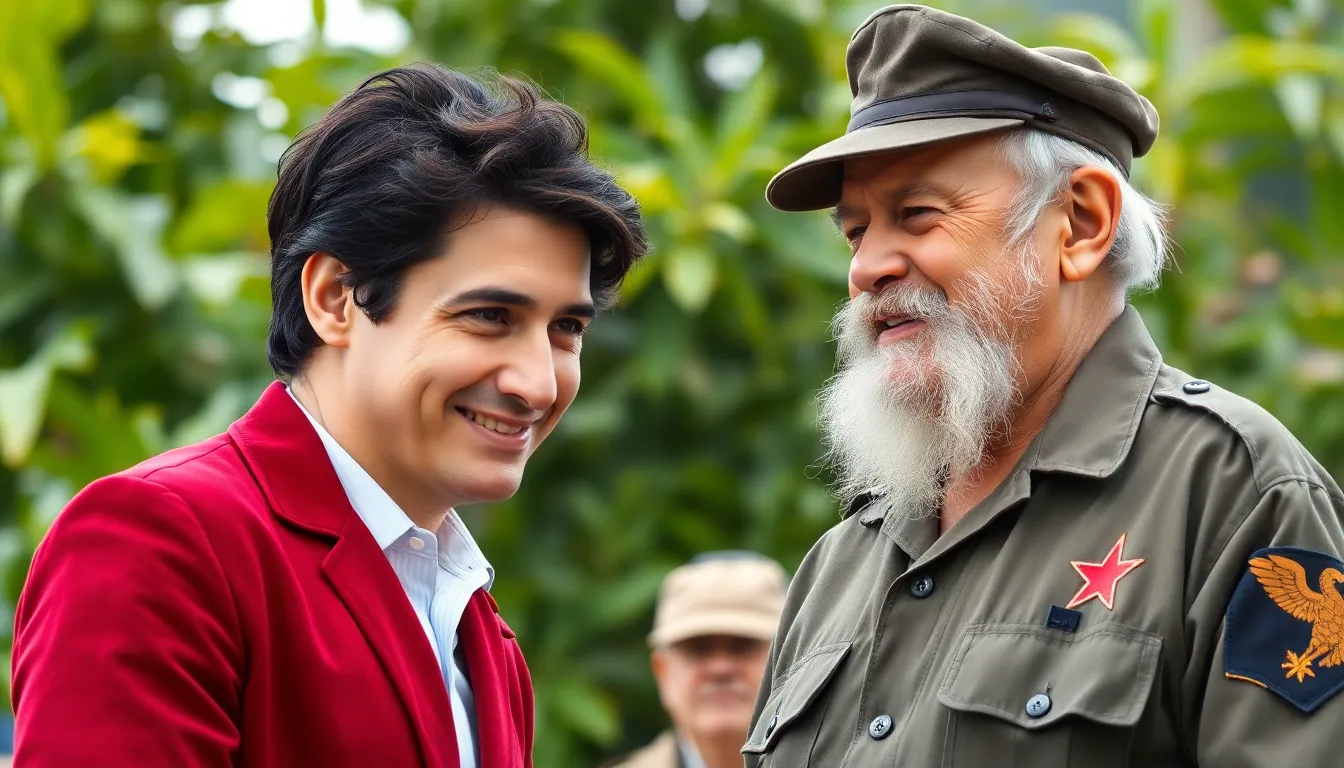The intriguing connection between Justin Trudeau and Fidel Castro has sparked curiosity and debate among political enthusiasts and casual observers alike. Photos of the Canadian Prime Minister alongside the late Cuban leader have fueled speculation about family ties and ideological influences. These images serve as a fascinating lens through which to explore the complex relationship between Canada and Cuba, as well as the legacy of both leaders.
As Trudeau navigates his political landscape, the historical context of these photographs adds layers to his story. They not only highlight the intertwining of their lives but also raise questions about how past relationships shape present-day politics. Dive into the captivating world of Trudeau and Castro, and uncover the stories behind these striking images that continue to captivate audiences around the globe.
Table of Contents
ToggleJustin Trudeau and Fidel Castro Photos: An Overview
Justin Trudeau and Fidel Castro appeared in several notable photographs, highlighting their intriguing connection. These images often depict moments during various events, showcasing a shared camaraderie and mutual respect. In one prominent photo, Trudeau, the son of former Prime Minister Pierre Trudeau, stands alongside Castro during an official visit to Cuba in 2016, symbolizing the longstanding diplomatic ties between the two nations.
The presence of these photographs has fueled speculation regarding familial connections. Observers often draw parallels between Trudeau’s physical features and those of Castro, suggesting potential ties that extend beyond political ideology. This speculation gained traction following Fidel Castro’s death in November 2016, prompting discussions on the historical and personal links shared by their families.
These photos also reflect the broader relationship between Canada and Cuba. Trudeau’s visit aimed to strengthen diplomatic and economic relations, marking a significant moment in Canadian foreign policy. By engaging with Castro, Trudeau reaffirmed Canada’s approach of dialogue and engagement with countries often viewed as political outliers.
The visual narratives within these images illustrate the complex dynamics of their relationship, revealing how personal and political histories intersect. They serve as a reminder of the ongoing discussions surrounding legacy, influence, and the interconnectedness of political figures across different eras and ideologies.
Historical Context

The historical context surrounding Justin Trudeau and Fidel Castro enhances understanding of their connection. It highlights the political landscapes of Canada and Cuba and how personal ties reflect broader diplomatic relations.
Background on Justin Trudeau
Justin Trudeau, born on December 25, 1971, in Ottawa, Ontario, has played a pivotal role in Canadian politics since becoming Prime Minister in 2015. He is the son of former Prime Minister Pierre Trudeau, who established strong diplomatic ties with Cuba during his tenure. Trudeau’s leadership emphasizes inclusivity and progressive policies. His government prioritizes environmental issues, indigenous rights, and multiculturalism, reflecting a commitment to a modern Canada. Trudeau’s visit to Cuba in 2016, shortly after Fidel Castro’s death, reinforced these diplomatic ties.
Background on Fidel Castro
Fidel Castro, born on August 13, 1926, in Birán, Cuba, served as the Prime Minister of Cuba from 1959 to 1976 and as President until 2008. He was a prominent communist leader known for his revolutionary activities opposing U.S. influence in Latin America. Castro’s regime emphasized education, healthcare, and land reform, though often criticized for human rights abuses. His long-standing resistance to U.S. policies significantly shaped Cuba’s global stance. Castro’s relationship with Canada remained relatively stable, with Pierre Trudeau famously being one of the first Western leaders to visit Cuba in 1976. This connection laid the groundwork for ongoing dialogue and interaction between the two nations.
The Photos: Analyzing the Imagery
Photographs of Justin Trudeau and Fidel Castro provide a captivating glimpse into their relationship, sparking discussions about their significance in Canada-Cuba relations. Analyzing these images reveals broader implications related to politics, history, and familial speculation.
Notable Photographs
Several notable photographs capture moments between Trudeau and Castro. One prominent image from Trudeau’s visit to Cuba in 2016 shows the two leaders smiling and engaged in conversation at Castro’s home. This photograph symbolizes the enduring diplomatic ties between Canada and Cuba. Another significant image taken during a 2014 event highlights Trudeau meeting Castro, showcasing a friendly demeanor. These images circulate widely, often igniting debates about family connections due to their similar features and shared political ideologies.
Interpretation of the Photos
Interpretation of these photos extends beyond mere aesthetics. Observers often analyze body language and expressions, suggesting a mutual respect and understanding. The camaraderie expressed in the images reflects the historical ties established by Pierre Trudeau, reinforcing the narrative of continuity in Canadian foreign policy. Speculation also arises concerning potential familial links, particularly in light of the public’s fascination with the similarity in physical traits between Trudeau and Castro. Each photo serves as a visual representation of complex political dynamics, encouraging deeper discussions about the legacy of both leaders in their respective nations.
Public Reaction and Controversy
The connection between Justin Trudeau and Fidel Castro has sparked considerable media attention and public debate. Reactions range from admiration to skepticism, reflecting diverse perspectives on both leaders and their legacies.
Media Response
Media outlets responded vigorously to the emergence of photos linking Trudeau and Castro. Coverage often emphasized the historical context, highlighting Canada-Cuba relations during the Trudeau family’s political tenure. Many articles underscored Trudeau’s commitment to diplomacy, particularly in light of his father’s friendship with Castro. Some journalists questioned the implications of these ties on contemporary Canadian policy, while others downplayed the importance of familial connections, framing them as part of a broader diplomatic narrative. Expert analyses provided diverse interpretations, with some praising Trudeau’s approach toward Cuba as progressive, while others voiced skepticism about its impact on Canadian politics.
Public Opinion
Public opinion surrounding the Trudeau-Castro photos is polarized. Supporters view the relationship as a testament to Trudeau’s commitment to international diplomacy and progressive values. They appreciate the historical ties and the continuity in Canada-Cuba relations. Critics, on the other hand, express concern over perceived ideological affiliations, questioning how these connections influence Trudeau’s policies. Social media platforms amplify these debates, with users sharing opinions and memes that reflect varying sentiments. Some express pride in a leader who embraces globalization, while others emphasize a need for caution in dealing with figures associated with controversial regimes. Survey data indicates a significant divide in perceptions of Trudeau’s leadership, illustrating the complexity of associating personal relationships with political implications.
The connection between Justin Trudeau and Fidel Castro, highlighted through their photographs, opens a fascinating dialogue about the intertwining of personal and political narratives. These images serve as a reminder of the historical ties that shape contemporary political landscapes. As discussions continue around their relationship, the implications for Canada-Cuba relations remain significant.
The interplay of admiration and skepticism in public reactions underscores the complexity of Trudeau’s leadership and its impact on international diplomacy. Ultimately, the legacy of these two leaders, captured in moments of camaraderie, invites further exploration into how personal relationships influence broader political dynamics.



